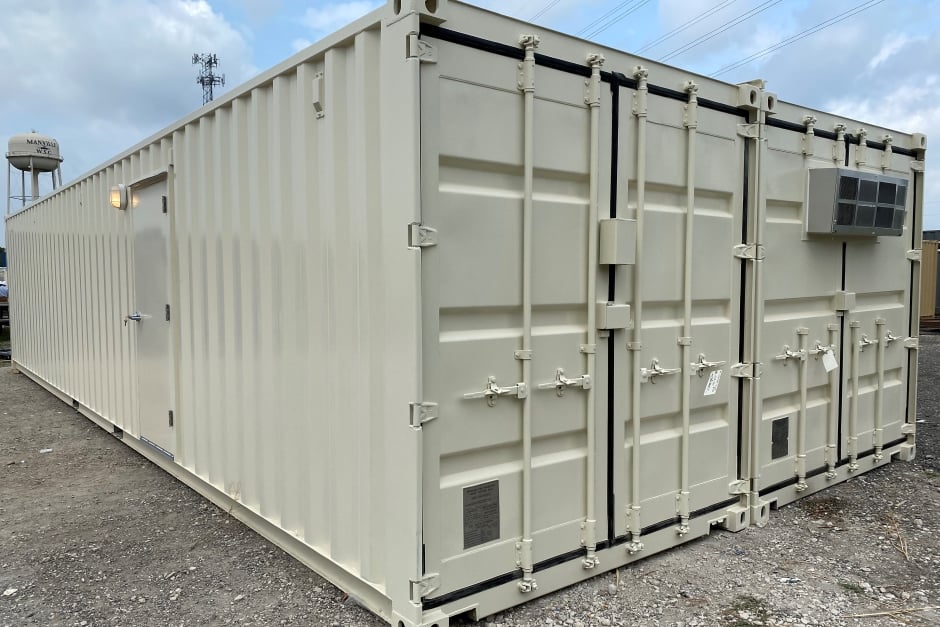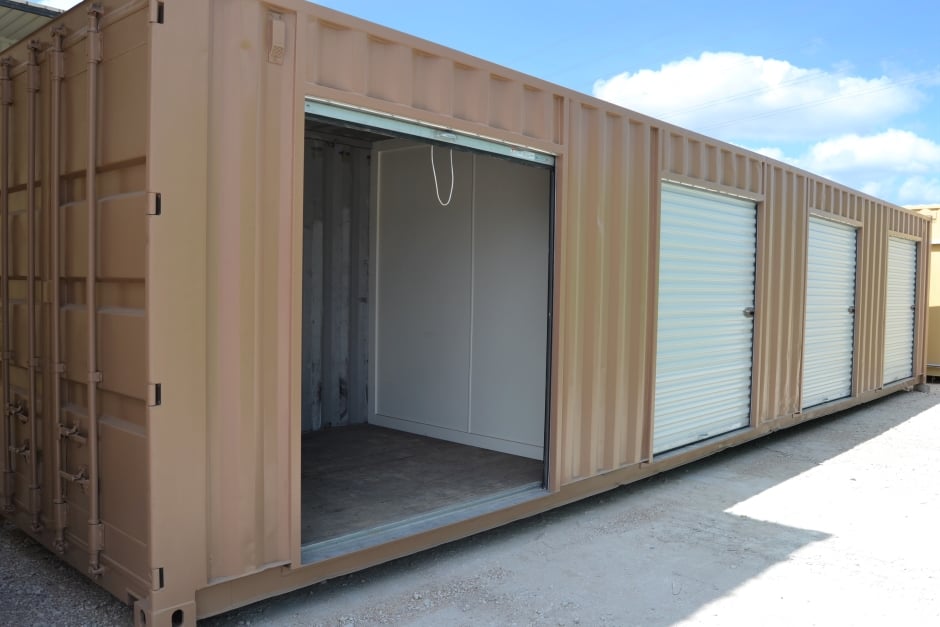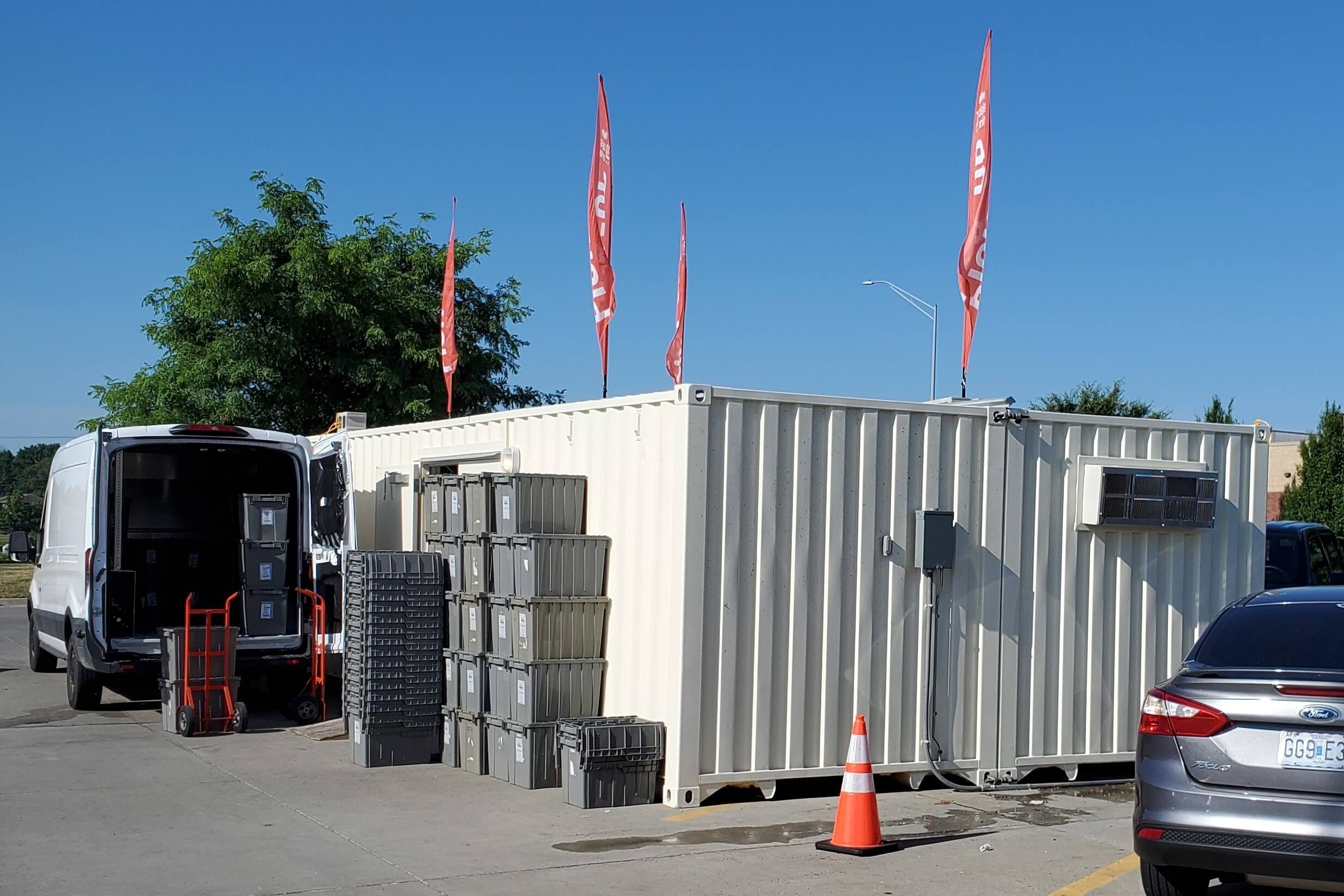Your Guide to Custom Storage Containers
 Marissa Morin | Sep 29, 2020
Marissa Morin | Sep 29, 2020

Is your company looking for a custom storage container? Maybe your organization needs a 20-foot unit to store industrial equipment or maybe you need several 40-foot containers to store food for a grocery store chain. Regardless of your need, this custom storage container guide will walk you through important questions to answer before you purchase a modified container unit.
What Do You Need to Store?

First, it’s important to clearly define what you need to store in your custom container. Depending on the intended use of the unit, you’ll likely need to request specific modifications. For example, if your organization plans to store sensitive equipment or perishable food in your custom container, you’ll need to request air conditioning and insulation for your box. Keep in mind that if your organization needs a climate-controlled box or internal lighting, you’ll also need nearby access to an electrical connection.
On the other hand, if your organization plans to store tools or supplies that aren’t sensitive to temperature, air conditioning systems may not be a priority. Instead, passive vents can encourage air flow without electrical connections.
What Size Do You Need?

Whether your company needs many units to ship to different locations or one single box adjacent to your current office, it’s important to consider the ideal size of your custom storage containers. If your organization needs single units but wants to make the most of internal storage space, you should consider a 40-foot shipping container. These longer boxes fit easily on the bed of a truck and on a narrow plot of land. Containers decrease in size from there, including 20-foot and 10-foot long units. These sizes help companies maximize even the most limited spaces, weather they must fit in a parking lot outside of a restaurant or inside a manufacturing warehouse.
Alternatively, if your company needs an even larger custom storage container than the standard sizes offer, you may want to consider combining multiple shipping containers. By modifying the individual containers with the intent to place them together on site, sealing the seam between units, larger structures offer the most internal space.
What Modifications Do You Need?

With each custom container project, specific modifications are needed based on how that container will be used day-to-day. If one container needs operable cargo doors to maximize easy access to stored items, another may instead need a personnel door to account for heavy foot traffic. Here is a breakdown of modifications worth considering:
Doors
Door options range from the cargo doors that are initially built into unmodified containers to several kinds of personnel doors and roll up doors. Consider which door – or which combination of doors – would provide the easiest access to your stored items. Both operable cargo doors and roll up doors allow large items to be moved in and out with relative ease. Personnel doors allow employees or a work crew to frequently enter and exit the storage unit. Adding multiple doors can further increase the accessibility of the unit.
Organization

If your business plans to relocate your custom storage container in the future, it may be beneficial to install permanent shelving or workspaces inside the container. That way, as the structure relocates, the shelving and countertop space will transport with the unit. Securing shelves to the walls of a shipping container allows companies to immediately stock the container with stored items. Similarly, permanent countertops provide a workspace ready to help workers organize and utilize stored items.
Flooring and Wall Options

Depending on the intended use of your custom storage container, flooring and wall options should benefit the space. For example, if you expect frequent foot traffic on a construction site, tread steel plates may be the best flooring option. Maybe your organization would prefer epoxy-coated floors or coin vinyl flooring, making the floors easier to clean.
As you begin to consider wall options, remember to consider insulation to help regulate internal temperature. Insulation options include Styrofoam, spray foam, rolled batt, or mineral wool. On top of the insulation, you can finish your walls with plywood, steel, or aluminum plates. Consider which option makes the most sense for your stored items.
Make Custom Storage Containers A Reality
Designing your ideal custom storage container may require a lot of careful thought to create the best storage unit for your specific need, but it doesn’t have to be complicated. Give us a call at 877-704-0177 or email us at Sales@FalconStructures.com to discuss your project with a shipping container expert. Together, we will work with you to help design a custom storage container with all the bells and whistles required to help keep your company organized.
SUBSCRIBE
- Shipping Container Modifications
- How-Tos
- Workspace
- Commercial Construction
- Multi-Container Buildings
- Storage Solutions
- Industrial Enclosures
- Bathrooms & Locker Rooms
- Oil & Gas
- Climate Control
- Green Building
- Living Space
- Industry Insight
- Military & Training Facilities
- Water Treatment Solutions
- Energy
THINK INSIDE THE BOX®
WITH OUR BLOG
Get everything from shipping container basics, to detailed how-tos and industry news in our weekly blog. Stay inspired and subscribe!
RELATED BLOGS

How Shipping Container Lifespan Helps Businesses Outlast Hard Times
Marissa Morin | Apr 28, 2020 | 3 min read
READ MORE

Conex on Campus: Shipping Container Structures in Education
Marissa Morin | Sep 21, 2022 | 3 min read
READ MORE

How to Use Shipping Containers in Your Warehouse
Marissa Morin | Feb 22, 2023 | 3 min read
READ MORE
